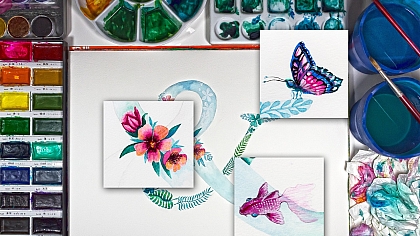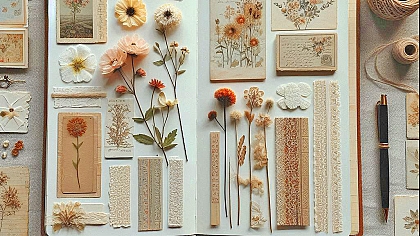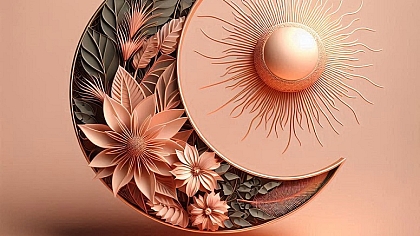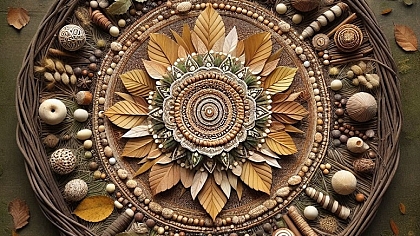
All About Native American Art & It's History
There is much mystery surrounding the visual art of the indigenous peoples of the Americas.
There are many art forms of which the roots are untraceable and European influences have also affected the art style of many native tribes. One thing that is for certain though is the closeness of Native American tribal culture with nature, It is apparent in the art produced by the Native American people, and most art styles are based on natural concepts, animals in particular. With that being said, however, there is also art based on supernatural concepts such as spirits and local legends surrounding tribal ancestors.
Europeans have been collecting art made by the indigenous people of the Americas since 1492 and have often showcased them in museums along with art from Asia and Africa. The Americas however, are far from these places and there wasn’t any outside influence for a very long time (influences in native North American culture and art came from either Canadian tribes, Inuit, or from the south of what is now Mexico).
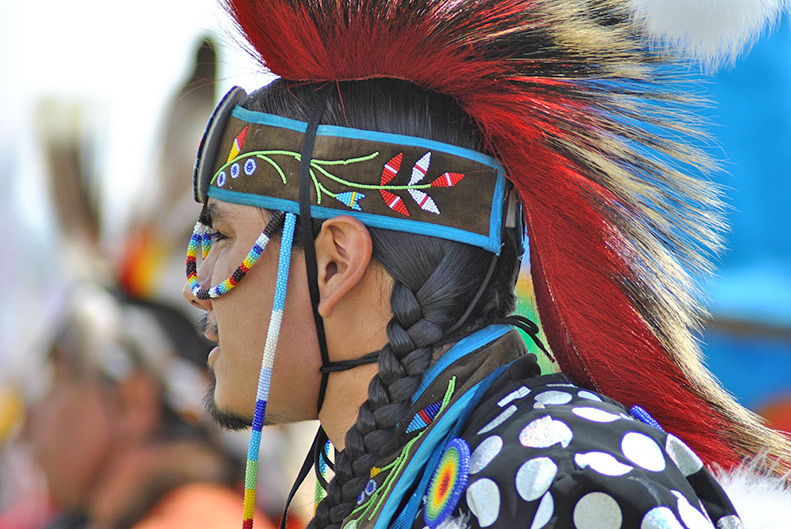
Native American art therefore should be attempted to be interpreted in a different light than, for example, African tribal art, as the Americas did not have the constant mix of cultures that is apparent in the rest of the world, at least not until around the time that the European settlers arrived.
The oldest evidence of art in the Americas dates back to the Lithic stage also known as the Archaic period (18,000-8000 BCE) in the form of an engraved bone, possibly from a mammoth, found in the early 21st century in Florida.
The etching on the bone depicts a walking mammoth or mastodon, and while the bone itself has been too mineralised to be dated, the carving is proven to have been made before the bone was mineralised. Given the anatomical authenticity of the carving and the heavy mineralisation of the bone, it is believed that the carving was made while mammoths or mastodons still existed making it over 10,000 years old.
Human remains were also found in the same area during the 20th century proving that there was some form of society in Florida during the time. Whilst art made from perishable goods would not have survived since then, there is evidence of cave paintings made by indigenous people during the Lithic stage.
The oldest known evidence of a painted object in North America is the Cooper Bison Skull which is painted with a red zigzag, the skull dates back to approximately 8,050 BCE.
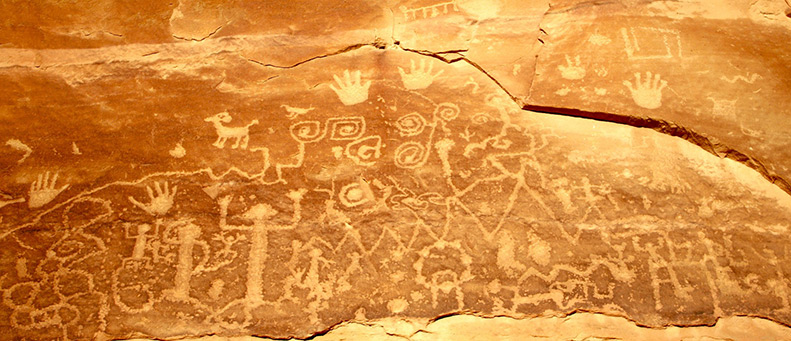
Remains of Lithic stage art in South America are the rock paintings at Caverna da Pedra Pintada which date back to around 9,250 to 8,550 BCE, they were made by the Monte Alegre people.
The earliest known textiles in South America date back to 8,000 BCE and were found in the Guitarrero Cave.
Most of the rock paintings and carvings (pictographs and petroglyphs respectively) made during the Lithic age were either found in the modern-day Southwestern United States and certain regions of the Andes.
Native Art in Alaska and Canada
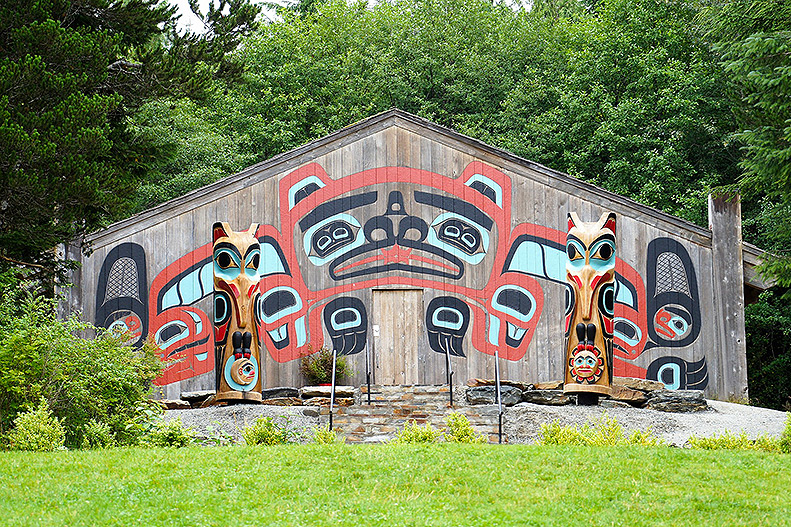
Early art of the indigenous Canadian and Alaskan tribes was mostly made for Shamanic rituals such as the carved masks of the Yup’ik people and the walrus ivory carvings of the Dorset. The Thule people who replaced the two aforementioned peoples however produced art for more decorative purposes.
The Inuit began producing artwork as souvenirs after making contact with European whaling ships and explorers, common examples of Inuit art include cribbage boards.
In the 1940s the Canadian Government encouraged the Inuit to produce more art to meet increased demand, in turn, Inuit artisans began producing prints and Serpentine sculptures.
Greenlandic Inuit have developed some unique art styles including a form of textile known as Avittat, which is made from sewed skin, furs, and small pieces of brightly dyed marine mammal organs in mosaic designs. The women from this region made exquisite netted beadwork collars and elaborate masks following an old mask-making tradition. A valuable medium of carving for the Inuit remains is that of sperm whale ivory.
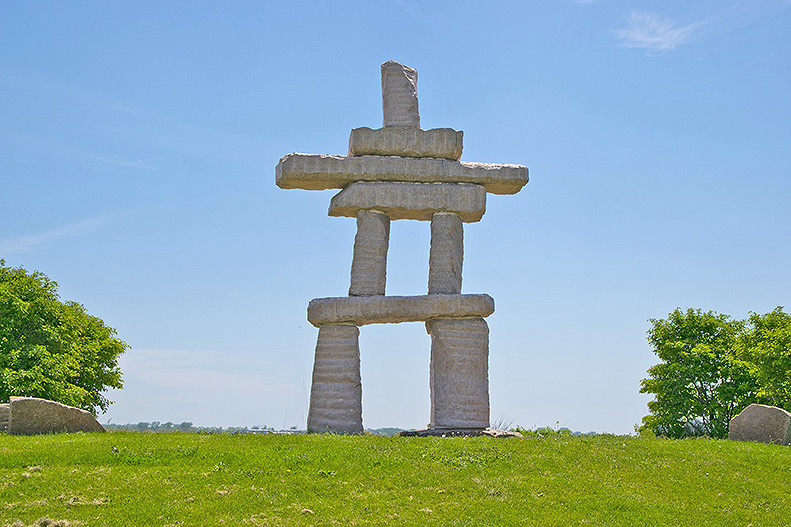
The people living in interior Alaska and Canada south of the Arctic Circle are known as subarctic peoples. Humans have lived in this region for a very long time but the oldest remains of art in the area is a site of rock carvings or petroglyphs dating back to 5,000 BCE in northwest Ontario.
Two major resources for art used by the subarctic peoples are caribou and moose providing hides, antlers, sinew, and various other artistic materials. Porcupine quillwork on hides and birch bark is practised; moose hair tufting and floral glass beadwork became popular after European contact and influence from the Grey Nuns.
The tribes that resided in Washington State, Oregon, and British Columbia including the Haida, Tlingit, Heiltsuk, Tsimshian, and other smaller tribes had a unique art style characterised by an extremely complex stylistic vocabulary expressed through woodcarving. These people were skilled at woodcarving and produced totem poles, transformation masks, and canoes; after contact with Europeans, two-dimensional paintings and silver, copper, and gold engraved jewellery were produced.
Native American Art of the United States
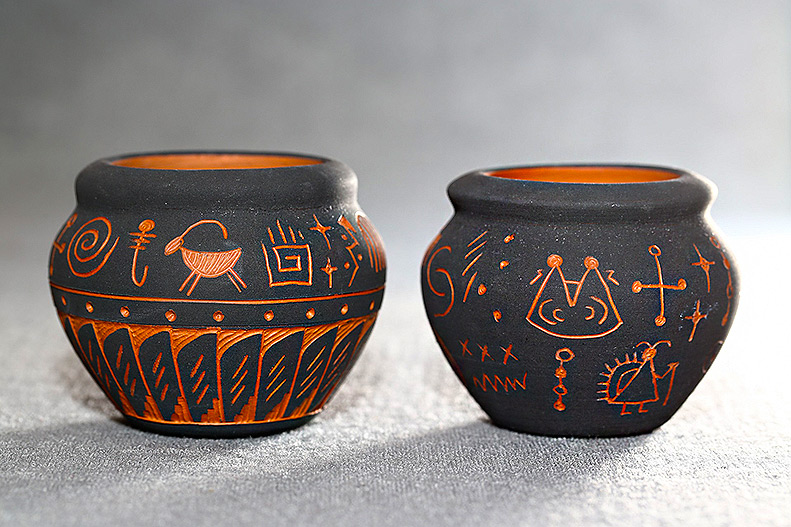
Poverty Point culture began from around 2000 to 1000 BCE during the Archaic period in the modern-day state of Louisiana. The interesting thing about the objects found at Poverty Point including chipped stone projecting points and tools, shell and stone beads, gorgets, vessels, and ground stone plummets is that the raw materials used originated from distant places.
Although some of the stone tools were made from materials found in the nearby mountains of Ouachita and Ozark, others originated from the much further away Ohio and Tennessee River valleys. The soapstone used for the vessels originated from the Appalachian foothills of Alabama and Georgia; the people of Poverty Point were either nomads or travelled far for raw materials. They also made hand-modelled fired clay anthropomorphic figurines.
Mississippian culture flourished in the Midwestern, Eastern, and South-eastern United States from around 800CE to 1500CE. The people from this region adopted maize agriculture becoming fully agrarian unlike their hunter-gatherer predecessors, this establishment paved the way for art forms unknown to tribes constantly on the move. The Mississippian people built large platform mounds and developed more advanced ceramic techniques using ground mussel shells as a tempering agent.
The Southeastern Ceremonial Complex was a pan-regional and pan-linguistic religion and trade network set up by the various southeastern natives. Most of the known information regarding the Southeastern Ceremonial Complex comes from examining the art left behind including pottery, shell gorgets and cups, stone statuary, repoussé copper plates, and religious maskettes.
European contact led to the spread of diseases and political strife eventually leading to the collapse of Mississippian society; the Taensa people. Other tribes descended from the Mississippian peoples include the Caddo, Choctaw, Muscogee, Creek, Wichita, and many other southeastern tribes.
The oldest wooden artefacts have been found in Florida dating back to 10,000 years ago but the oldest carved and painted wooden objects found were made over the past 2000 years including animal effigies and face masks, the most famous specimen being a 66cm tall carving of an eagle found in a mortuary pond at Fort Center, Northwest of Lake Okeechobee.
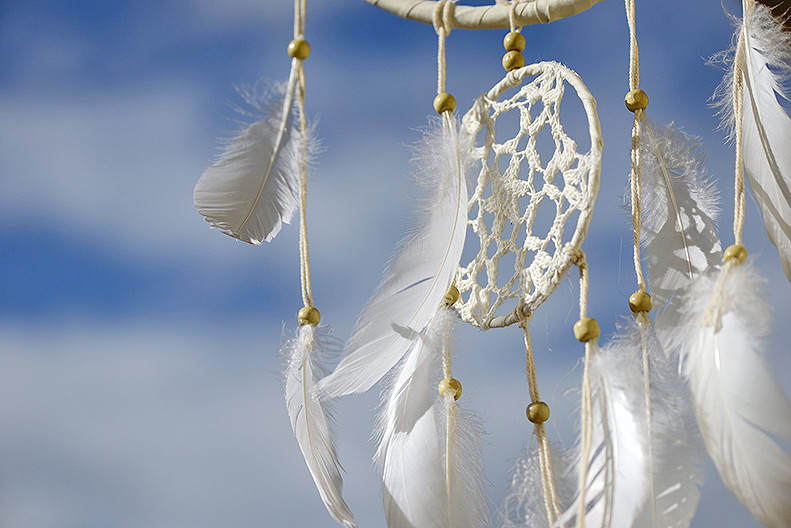
The Great Plains have been home to many tribes for thousands of years. From about 900-185ce the tribes of the Great Plains were semi-nomadic farmers and hunters who cultivated maize and lived in rectangular houses. The introduction of horses to the Americas by Europeans completely changed the culture of the Great Plains tribes, they could now become fully nomadic following the herds of bison which they hunted on horseback.
Bison were a crucial medium for Great Plains art with hide clothing decorated with porcupine quill embroidery and beads made from dentalium shells and elk teeth being worn. Bison hide became a popular medium for painting; men painted narrative, pictorial designs recording personal achievements or visions, they even made historical calendars known as Winter Counts. Women painted geometric designs on tanned hide.
In the late 19th century, non-native hunters destroyed most of the bison herds forcing the Great Plains tribes to use muslin or paper for their paintings which became known as ledger art.
The Great Basin tribes settled near major rivers resulting in their art being influenced by other tribes far from the area. The Nez Perce, Yakama, Umatilla, and Cayuse tribes wove rectangular corn husks or hemp dog bone bags which were decorated with geometric designs. They were also famous for their contour-style beading and horse regalia.
The Paiute, Shoshone, and Washoe tribes were master basket makers, after being displaced from their lands by European settlers the Washoe wove baskets for the commodity market from 1895 to 1935, Their baskets were waterproof and incorporated seed beads on the surface.
The Native Americans of California were also renowned basket weavers. Popular basket-weaving tribes include the Cahuilla, Chumash, Pomo, Miwok, and Hupa among others, and many of their works are in museums.
The largest number of Petroglyphs in North America are found in California in the Big and Little petroglyph canyons made by the Coso people. The most elaborate cave paintings in North America are considered to be the art of the Chumash people.
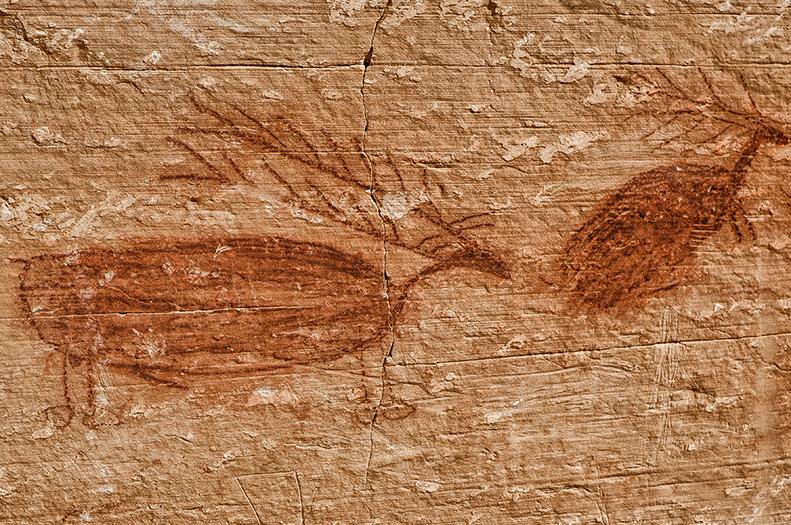
The Anasazi or Ancestral Puebloans were the ancestors of today’s Pueblo tribes. The Anasazi flourished in the Southwest of America where they cultivated corn and lived in small towns. Their agrarian society meant that vessels were needed to store water and grain so naturally, pottery became their specialty.
The Anasazi made cliff dwellings that were unique to the region; the largest and most beautiful ancient cliff dwellings made by them are in Chaco Canyon, New Mexico. It includes 15 major complexes made with sandstone and timber, it is connected by a network of roads. The jewellery of the Ancestral Puebloans primarily consisted of Turquoise, set, and spiny oyster shells.
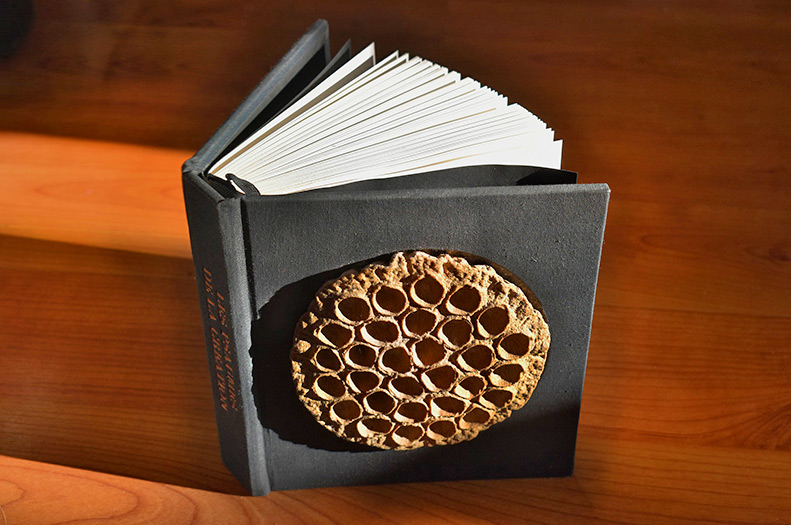
The Athabaskan people emigrated from Northern Canada to the Southwest and they include the famous Navajo and Apache tribes. Sand painting art was developed from Navajo healing ceremonies and their knowledge of weaving on upright looms learned from the Puebloans, enabled them to weave blankets and later rugs for trade when new railroads meant that imported blankets were very cheap.
In the 1850s the Navajo learned silversmithing from the Mexicans and it quickly spread to other tribes. The Hapi and the Zuni are known for their silver jewellery.
Although many tribes have different art forms, one thing that remained popular among many Native Americans is the vision quest painting - paintings depicting spirits seen in dreams.



